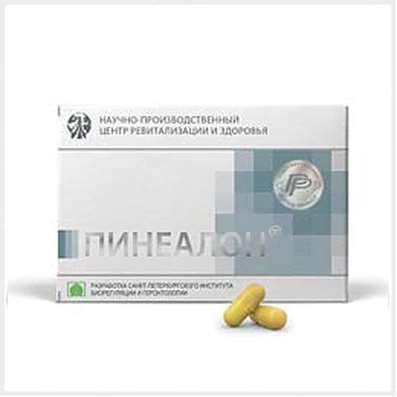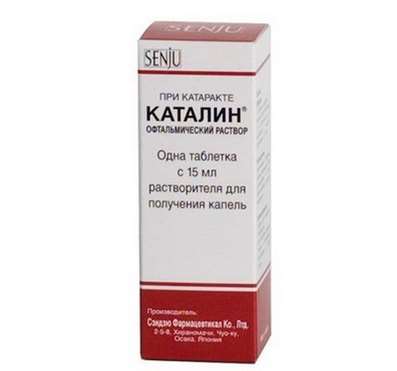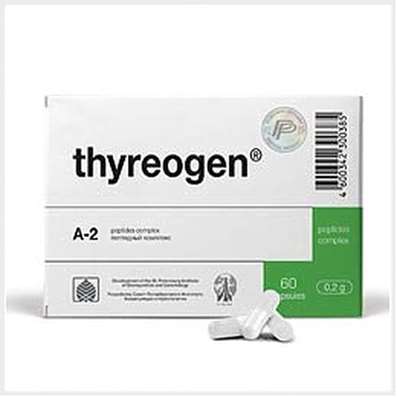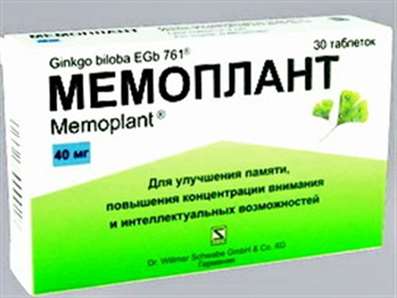Instruction for use: Atorvastatin 80mg
I want this, give me price
International Nonproprietary Name (INN): Atorvastatin
Pharmaceutic group: Hypocholesterolemic
Presentation:
Film-coated tablets 10 mg ╣30;
Film-coated tablets 20 mg ╣30.
Film-coated tablets 40 mg ╣30.
Film-coated tablets 80 mg ╣30.
Available with prescription
Indications for Atorvastatin
Atorvastatin is an oral drug that lowers the level of cholesterol in the blood. It belongs to a class of drugs referred to as statins, which includes lovastatin (Mevacor), simvastatin, (Zocor), fluvastatin (Lescol), and pravastatin (Pravachol) and rosuvastatin (Crestor). All statins, including atorvastatin, prevent the production of cholesterol in the liver by blocking HMG-CoA reductase, an enzyme that makes cholesterol. Statins reduce total cholesterol as well as LDL cholesterol in blood. LDL cholesterol is believed to be the "bad" cholesterol that is primarily responsible for the development of coronary artery disease. Reducing LDL cholesterol levels retards progression and may even reverse coronary artery disease. Atorvastatin also raises the concentrations of HDL ("good") cholesterol that protects against coronary artery disease and reduces the concentration of triglycerides in the blood. (High blood concentrations of triglycerides also have been associated with coronary artery disease.) The FDA approved atorvastatin in December 1996.
Atorvastatin is used for the treatment of elevated total cholesterol, LDL, and triglycerides and to elevate HDL cholesterol. The effectiveness of atorvastatin in lowering cholesterol is dose-related, meaning that higher doses reduce cholesterol more. Atorvastatin prevents angina, stroke, heart attack, hospitalization for congestive heart failure, and revascularization procedures in individuals with coronary artery disease. Atorvastatin reduces the risk of myocardial infarction (heart attack), stroke, angina and revascularization procedures in adults with multiple risk factors for coronary artery disease. Atorvastatin also prevents heart attacks and strokes in patients with type 2 diabetes with multiple risk factors for coronary artery disease.
DOSING: Atorvastatin is prescribed once daily. The usual starting dose is 10-20 mg per day, and the maximum dose is 80 mg per day. Individuals who need more than a 45% reduction in LDL cholesterol may be started at 40 mg daily. Atorvastatin may be taken with or without food and at any time of day.
DRUG INTERACTIONS: Decreased elimination of atorvastatin could increase levels of atorvastatin in the body and increase the risk of muscle toxicity from atorvastatin. Therefore, atorvastatin should not be combined with drugs that decrease its elimination. Examples of such drugs include erythromycin (E-Mycin), ketoconazole (Nizoral), itraconazole (Sporanox), clarithromycin (Biaxin), telithromycin (Ketek), cyclosporine (Sandimmune), nefazodone (Serzone), and HIV protease inhibitors such as indinavir (Crixivan) and ritonavir (Norvir).
Large quantities of grape fruit juice (>1.2 liters daily) also will increase blood levels of atorvastatin and should not be taken. Amiodarone (Cordarone), verapamil (Calan Verelan, Isoptin), cyclosporine (Sandimmune), niacin (Niacor, Niaspan, Slo-Niacin), gemfibrozil (Lopid) and fenofibrate (Tricor) also may increase the risk of muscle toxicity when combined with atorvastatin.
Atorvastatin increases the effect of warfarin (Coumadin) and the concentration in blood of digoxin (Lanoxin). Patients taking atorvastatin and warfarin or digoxin should be monitored carefully. Cholestyramine (Questran) decreases the absorption of atorvastatin. Atorvastatin should be given at least two hours before and at least four hours after cholestyramine.
PREGNANCY: Atorvastatin should not be taken during pregnancy because the developing fetus requires cholesterol for development, and atorvastatin reduces the production of cholesterol. Atorvastatin should only be administered to women of childbearing age if they are not likely to become pregnant. NURSING MOTHERS: It is not known if atorvastatin is secreted in breast milk. Because of the potential risk of adverse events, breastfeeding mothers should not use atorvastatin.
Trade name of the drug ľ Atorvastatin
Dosage Form: tablets film-coated
Active substance:
atorvastatin calcium trihydrate - 10.85 mg and 21.70 mg, corresponding to 10 mg of atorvastatin and 20 mg;
Excipients: calcium carbonate - 33.00 / 66.00 mg, microcrystalline cellulose - 48.00 / 96.00 mg lactose monohydrate (milk sugar) - 23.85 / 47.70 mg pregelatinized starch (starch 1500) - 32.80 / 65.60 mg colloidal silicon dioxide (aerosil) - 0.75 / 1.50 mg of magnesium stearate - 0.75 / 1.50 mg of polyvinyl alcohol - 2.50 / 5.00 mg macrogol (polyethylene glycol) - 1.26 / 2.52 mg talc - 0.93 / 1.86 mg titanium dioxide - 1.56 / 3.12 mg.
Description:
Tablets are white, biconvex, film-coated.
Pharmacotherapeutic group: lipid-lowering agents, HMG-CoA reductase inhibitors.
ATX code: C10└└05
Pharmacological Properties of AtorvastatinPharmacodynamics
Lipid-lowering agents of the statin group. Selective competitive inhibitor of HMG-CoA reductase - the enzyme that converts 3-hydroxy-3-methylglutaryl coenzyme A to mevalonic acid which is a precursor of sterols, including cholesterol. Triglycerides (TG) and cholesterol in the liver are included in the very low density lipoproteins (VLDL), enter the blood plasma and transported to peripheral tissues. Low density lipoproteins (LDL) are formed from VLDL during the interaction with the LDL receptor. Atorvastatin reduces plasma levels of cholesterol and lipoproteins by inhibiting HMG-CoA reductase, a cholesterol synthesis in the liver and increase the number of "liver" LDL receptors on the cell surface, which leads to increased trapping and LDL catabolism. Reduces LDL, it causes marked and persistent increase in the activity of LDL receptors. Lowers LDL cholesterol in patients with homozygous familial hypercholesterolemia, which usually can not be lipid-lowering therapy means. It lowers total cholesterol by 30-46%, LDL - by 41-61%, apolipoprotein B - by 34-50% and TG - by 14-33%; It causes an increase in HDL-cholesterol (HDL) and apolipoprotein A. Dozozawisimo reduces the level of LDL in patients with homozygous hereditary hypercholesterolemia resistant to therapy with other lipid-lowering drugs.
Pharmacokinetics
Absorption - high. The maximum concentration (Cmax) is achieved after 1-2 h, Cmax in women above 20%, the area under the curve / concentration time (AUC) in plasma - below 10%; Cmax in patients with alcoholic cirrhosis by 16 times, AUC - 11 times higher than normal.
Food somewhat reduces the rate and duration of absorption of the drug (25% and 9% respectively) but LDL cholesterol reduction similar to that in the application of atorvastatin without food. The concentration of atorvastatin in the evening application in lower than in the morning (approximately 30%). Revealed a linear relationship between the degree of absorption of the drug and the dose.
Bioavailability - 12% systemic bioavailability of inhibitory activity against HMG-CoA reductase - 30%. The low systemic bioavailability due to first pass metabolism in the mucosa of the gastro-intestinal tract and "first pass" through the liver.
The average volume of distribution - 381 liters, the connection with plasma proteins - 98%. It is metabolized primarily in the liver by the action of cytochrome CYP3A4, CYP3A5 and CYP3A7 with the formation of pharmacologically active metabolites (ortho and paragidroksilirovannyh derivatives, beta-oxidation products). In vitro and ortho paragidroksilirovannye metabolites have an inhibitory effect on HMG-CoA reductase, comparable to that of atorvastatin. The inhibitory effect of the drug against HMG-CoA reductase activity approximately circulating metabolites by 70% is determined.
Excreted in the bile following hepatic and / or extrahepatic metabolism (not exposed to pronounced enterohepatic recirculation).
The half-life - 14 hours. The inhibitory activity against HMG-CoA reductase remains about 20-30 hours due to the presence of active metabolites. Less than 2% of an oral dose is determined in urine. Not output during hemodialysis.
Indications for Atorvastatin
Atorvastatin is used:
in conjunction with diet to reduce elevated total cholesterol, cholesterol / LDL cholesterol, apolipoprotein B, and triglycerides and increase HDL cholesterol in patients with primary hypercholesterolemia, heterozygous familial and non-familial hypercholesterolaemia and combined (mixed) hyperlipidemia (type IIa and IIb according to Fredrickson);
in combination with a diet for treating patients with elevated serum triglyceride levels (Frederickson Type IV on) and patients with disbetalipoproteinemiey (Type III according to Fredrickson) whose diet therapy does not give adequate effect;
to reduce the levels of total cholesterol and cholesterol / LDL cholesterol in patients with homozygous familial hypercholesterolemia, when diet therapy and other non-pharmacological treatments are not sufficiently effective.
Contraindications for Atorvastatin
Hypersensitivity to the drug;
active liver disease or increased activity of "liver" enzymes of unknown origin (more than 3 times the upper limit of normal);
hepatic failure (severity classification Child-Pyuga A and B)
pregnancy;
lactation;
age of 18 years (effectiveness and safety have been established).
Precautions: alcohol abuse, history of liver disease, severe electrolyte imbalance, endocrine and metabolic disorders, arterial hypotension, severe acute infection (sepsis), uncontrolled epilepsy, extensive surgery, trauma, skeletal muscle disease.
Pregnancy and lactation
Atorvastatin is contraindicated during pregnancy and lactation (breastfeeding).
It is not known whether atorvastatin is excreted in breast milk. Given the potential for adverse effects in infants, if necessary, use during lactation should decide the issue of termination of breastfeeding.
Women of reproductive age during treatment should use adequate contraception methods. Atorvastatin can be administered to women of childbearing age only when the probability of pregnancy are very low and the patient informed of the potential risk of treatment to the fetus.
Atorvastatin Dosage and Administration
Before the appointment of atorvastatin patient should be advised to standard lipid-lowering diet, which he must continue to comply with throughout the treatment period.
The initial dose is an average of 10 mg 1 time / day. The dose varies from 10 to 80 mg of 1 time / day.
The drug can be administered at any time of the day independently of food or meal times. Dose picked for baseline cholesterol / LDL levels, the goal of therapy and individual effect. At the beginning of the treatment and / or during increasing doses of atorvastatin is necessary every 2-4 weeks to monitor levels of lipids in blood plasma and appropriately corrected dose.
Primary hypercholesterolemia and mixed hyperlipidemia, and type III and IV according to Fredrickson.
In most cases, a prescribed dose of atorvastatin 10 mg of the drug 1 time per day. A significant therapeutic effect was observed after 2 weeks, as a rule, and maximum therapeutic effect is usually observed after 4 weeks. With long-term treatment of this effect is maintained.
Homozygous familial hypercholesterolemia.
Assign a dose of 80 mg (4 tablets of 20 mg), 1 per day.
Use of the drug in patients with renal failure and kidney disease will not affect the level of atorvastatin plasma cholesterol or reduction degree / LDL content when it is used, so changing the dose required.
In hepatic insufficiency the dose should be reduced (see. Section "Precautions" and "Cautions").
In applying the drug in elderly patients differences in safety, efficiency or achieve goals hypolipidemic therapy compared with the general population have been noted.
Side effect ofAtorvastatin
on the part of the nervous system - often 2% - insomnia, dizziness; less than 2% - headache, asthenia, malaise, drowsiness, nightmares, paresthesia, peripheral neuropathy, amnesia, emotional lability, ataxia, facial paralysis, hyperkinesia, migraine, depression, hypoesthesia, loss of consciousness.
From the senses: less than 2% - amblyopia, tinnitus, dryness of the conjunctiva, disturbance of accommodation, bleeding in the retina of the eye, deafness, glaucoma, parosmiya, loss of taste, taste perversion.
Since the cardiovascular system: often 2% - pain in the chest; less than 2% - palpitation, vasodilatation symptoms of orthostatic hypotension, increased blood pressure, phlebitis, arrhythmia, angina pectoris.
From hemopoiesis system: less than 2% - anemia, lymphadenopathy, thrombocytopenia.
The respiratory system: often 2% - bronchitis, rhinitis; less than 2% - pneumonia, dyspnea, exacerbation of asthma, nasal bleeding.
From the digestive system: often 2% - nausea; less than 2% - heartburn, constipation or diarrhea, flatulence, gastralgia, abdominal pain, decreased or increased appetite, dry mouth, regurgitation, dysphagia, vomiting, stomatitis, esophagitis, glossitis, erosive and ulcerative lesions of the oral, gastro-mucosal, hepatitis, biliary colic, cheilitis, ulcer 12 duodenal ulcer, pancreatitis, cholestatic jaundice, abnormal liver function, rectal bleeding, melena, bleeding gums, tenesmus.
From the musculoskeletal system: often 2% - arthritis; less than 2% - spasms of the leg muscles, bursitis, tenosynovitis, myositis, myopathy, arthralgia, myalgia, rhabdomyolysis, torticollis, muscular hypertonicity, contracture of joints.
With the genitourinary system: often 2% - urogenital infections, peripheral edema; less than 2% - dysuria (including pollakiuria, nocturia, urinary incontinence or urinary retention, compelling urge to urinate), nephritis, hematuria, vaginal bleeding, nefrourolitiaz, metrorrhagia, epididymitis, decreased libido, impotence, abnormal ejaculation.
For the skin: often 2% - alopecia, dermatoxerasia, increased sweating, eczema, seborrhea, ecchymosis, petechiae.
Allergic reaction: less than 2% - itchy skin, skin rash, contact dermatitis, rare - urticaria, angioneurotic edema, facial edema, photosensitivity, anaphylaxis, erythema multiforme exudative (including Stevens-Johnson syndrome), toxic epidermal necrolysis (syndrome Lyell).
Laboratory findings: less than 2% - hyperglycemia, hypoglycemia, increased serum CPK, albuminuria.
Others: less than 2% - weight gain, gynecomastia, mammalgia, exacerbation of gout.
overdose
Treatment: No specific antidote, being symptomatic therapy.
Hemodialysis is ineffective.
Interaction
The risk of myopathy during treatment with other drugs of this class is increased by the simultaneous use of cyclosporine, fibrates, erythromycin, antifungal agents belonging to the azole, and nicotinic acid.
In simultaneous ingestion of atorvastatin and a suspension containing magnesium and aluminum hydroxides, decreased atorvastatin plasma concentrations approximately 35%, but the degree of decrease in cholesterol / LDL level is not changed.
With simultaneous use of atorvastatin does not affect the pharmacokinetics of antipyrine (phenazone), so the interaction with other drugs metabolized by the same cytochrome isozymes are not expected.
With simultaneous application of colestipol atorvastatin plasma concentration decreased by about 25%. However, lipid-lowering effect of the combination of atorvastatin and colestipol than that for each drug individually.
If readmission of digoxin and atorvastatin 10 mg equilibrium concentration of digoxin in the blood plasma did not change. However, the application of digoxin in combination with atorvastatin 80 mg / day. digoxin concentrations increased by approximately 20%. Patients receiving digoxin in combination with atorvastatin, should be observed.
With simultaneous use of atorvastatin and erythromycin (500 mg four times / day) and clarithromycin (500 mg, 2 times / day), which inhibit cytochrome P450 3A4, was an increase in the concentration of atorvastatin in plasma.
With simultaneous use of atorvastatin (10 mg 1 time / day) and azithromycin (500 mg 1 times / day) atorvastatin plasma concentrations did not change.
Atorvastatin had no clinically significant effect on the concentration of terfenadine in the blood plasma, which is metabolized primarily by cytochrome P450 3A4; therefore it seems unlikely that atorvastatin can significantly affect the pharmacokinetic parameters of other cytochrome P450 3A4 substrates.
With simultaneous use of atorvastatin and oral contraceptive containing norethindrone and ethinyl estradiol, showed a significant increase in AUC of norethindrone and ethinyl estradiol is about 30% and 20% respectively. This effect should be considered when selecting an oral contraceptive for a woman receiving atorvastatin.
Concomitant use with drugs that reduce the concentration of endogenous steroid hormones (including cimetidine, ketoconazole, spironolactone), increases the risk of reduction of endogenous steroid hormones (be careful).
not revealed the study of the interaction of atorvastatin with warfarin and cimetidine evidence of clinically significant interaction.
With simultaneous use of atorvastatin 80 mg and amlodipine 10 mg the pharmacokinetics of atorvastatin at steady state did not change.
There were no clinically significant adverse interaction atorvastatin and antihypertensive agents.
The simultaneous use of atorvastatin with protease inhibitors, known as cytochrome P450 3A4 inhibitors, accompanied by an increase atorvastatin plasma concentration.
Pharmaceutical incompatibility is not known.
special instructions for Atorvastatin
Before starting therapy with atorvastatin patient must assign a standard hypolipidemic diet, which he must comply during the entire treatment period.
The use of inhibitors of HMG-CoA reductase inhibitors to reduce the level of lipids in the blood can lead to changes in biochemical parameters that reflect the function of the liver. liver function should be monitored before treatment and after 6 weeks, 12 weeks after the start of atorvastatin and improve after each dose, and periodically, for example every 6 months. The increased activity of "liver" enzymes in the blood serum may occur during therapy with atorvastatin. Patients with marked increase in enzyme levels should be controlled to the level of enzymes return to normal. In that case, if the values of alanine aminotransferase (ALT) or asparaginaminotransferazy (AST) is more than 3 times higher than the level of the upper allowable limit, it is advisable to reduce the dose of atorvastatin or discontinue treatment.
Atorvastatin should be used with caution in patients who abuse alcohol and / or have liver disease. Active liver disease or persistent elevation of transaminases of unknown origin are contraindications to the appointment of atorvastatin.
Atorvastatin Treatment can cause myopathy. The diagnosis of myopathy (pain and weakness in the muscles, combined with increased activity of creatine phosphokinase (CPK) more than 10 times compared to the upper limit of normal) should be discussed in patients with widespread myalgia, muscle tenderness or weakness and / or marked increase in activity of CK. Patients should be warned that they should immediately inform your doctor about the appearance of unexplained pain or weakness in muscles, if accompanied by malaise or fever. Atorvastatin therapy should be discontinued in the event expressed increasing CPK or in the presence of confirmed or suspected myopathy. The risk of myopathy during treatment with other drugs in this class increased, while the use of cyclosporine, fibrates, erythromycin, niacin or azole antifungal agents. Many of these drugs inhibit metabolism mediated by cytochrome P450 3A4 and / or transport of drugs. Atorvastatin is biotransformed by the action of CYP 3A4. Assigning atorvastatin in combination with fibrates, erythromycin, immunosuppressive agents, azole antifungal agents or with nicotinic acid in a lipid-lowering doses should carefully weigh the potential benefits and risks of treatment and regularly monitor patients in order to detect pain or weakness in the muscles, especially during the first few months of treatment and in periods of high dose of any drug. In such situations, we can recommend periodic determination of CPK activity, although such control does not prevent the development of severe myopathy.
When using atorvastatin, as well as other tools in this class, cases of rhabdomyolysis described with acute renal failure due to myoglobinuria. Atorvastatin therapy should be suspended or completely cancel the appearance of signs of a possible myopathy or presence of risk factors for renal failure with rhabdomyolysis (eg, severe acute infection, hypotension, major surgery, trauma, severe metabolic, endocrine and electrolyte disorders, and uncontrolled seizures).
Before starting therapy with atorvastatin is necessary to try to achieve adequate hypercholesterolemia control through diet therapy, physical activity, weight loss in obese patients, and the treatment of other conditions.
Patients should be warned that they should immediately consult a doctor if unexplained pain or weakness in muscles, especially if accompanied by malaise or fever.
Effects on driving ability and work with the mechanisms
The adverse effect of atorvastatin on the ability to drive and work with the mechanisms have not been reported.
Release form of Atorvastatin
Film-coated tablets 10 mg and 20 mg.
10 tablets in blisters of PVC film and aluminum foil printed patent.
1, 2, 3, 4 or 5 of cellular contour instruction packages in a pile of cardboard.
Storage conditions of Atorvastatin
In a dry, dark place at a temperature no higher than 25 ░ C.
Keep out of the reach of children.
Shelf life of Atorvastatin
3 years.
Do not use beyond the expiration date printed on the package.
Conditions of supply of Atorvastatin from pharmacies
With prescription.

 Cart
Cart





